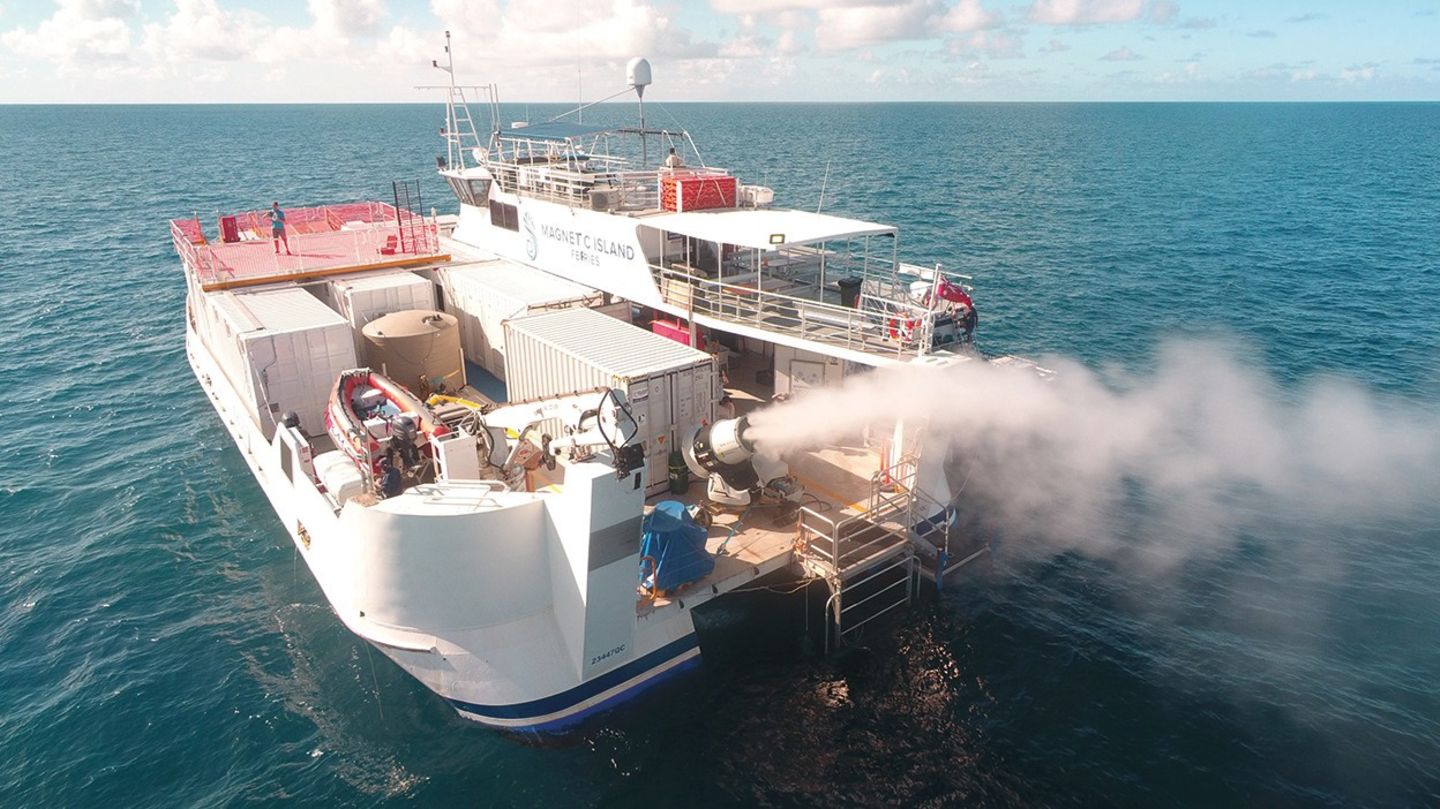More clouds mean fewer sun rays. In Australia, work is underway to provide the Great Barrier Reef with the necessary shade through cloud ships.
How can you stop climate change? Most of the time the answer is by stopping fossil fuel consumption. But this slows down the rise in temperature and, in the best case scenario, slows it down at some point, the warming of the earth is not reversed. Zones in which it is already too hot cannot expect any help.
In Australia, the corals of the Great Barrier Reef are bleaching and dying. Australian scientists are now working on a method to save the reef. They want to use artificial clouds to protect the coral banks from too much sunlight.
Artificial cloud formation is one of the methods of so-called geo-engineering – i.e. one of the methods that want to change the world’s climate through technical interventions. There is a wide arsenal of ideas here on how the planet could be cooled. This begins with inoculating the cold seas with minerals to promote algae growth and up to the vision of enriching the upper parts of the atmosphere with “glitter” dust in order to reflect some of the sun’s rays back into space. This kit also includes the idea of using cloud ships to increase the formation of clouds, which in turn should have a reflective effect.
Regional protective measure
In Australia, however, the aim is not to cloud the entire planet, but to specifically weaken the sunlight over the Great Barrier Reef. An old ferry was converted for this purpose. A large fan was then installed on board. The machine sucks in the warm air, in a turbine seawater is sprayed into the air stream by 320 nozzles in the size of nanodrops – this is how a giant fog machine is created.
In theory, the method has long been known, research is now being carried out in Australia on how such a system can work in practice. Daniel Harrison, oceanographer and engineer at Southern Cross University in Coffs Harbor, Australia, told Nature: “We are now very confident that we can get the particles up into the clouds. But we have yet to find out how Clouds will react to it. ” In fact, the experiments suggest that the technology works even better than the computer models had previously calculated.
Behavior of the droplets
Harrison was primarily concerned with observing how the potties behave in practice. If they had merged, they would have rained down again quickly. In fact, however, they floated above the water and began to evaporate and then rise to the top. Because the ascent is crucial if clouds are to form that are in the sky for a long time. “We didn’t expect that at all,” says Harrison, “but it turned out that we were doing this experiment in the middle of an ascending mass of air.”
Many more droplets rose into the clouds than scientists had anticipated. But to achieve a real effect, your fog machine would have to be ten times larger, then you would be able to brighten the clouds over the reef by about 30 percent. In this way, the incident solar radiation could be reduced locally by around 6.5 percent. However, one station would not be enough. Around 1000 machines would be needed to cover the Great Barrier Reef. Their energy needs would also have to be covered using renewable sources. In the long run, it would make little sense to burn diesel to save the climate.
Controversial methods
Geoengineering is always controversial. Because it is difficult to predict what the long-term consequences of the interference in the atmosphere will be. In the case of “regional” protection measures such as over the reef, the effects will not be dramatic. But if many regions near the sea were to produce clouds to reduce the power of the sun, reflection would only be the first consequence of these measures. Ultimately, one would intervene massively in the cloud and thus also the rain balance of the planet. So Harrison says the cloud lightening project is all about local adjustment and that it is not a global geoengineering project. In addition, it is only a partial measure in the large-scale attempt to save the reef.
David William is a talented author who has made a name for himself in the world of writing. He is a professional author who writes on a wide range of topics, from general interest to opinion news. David is currently working as a writer at 24 hours worlds where he brings his unique perspective and in-depth research to his articles, making them both informative and engaging.




